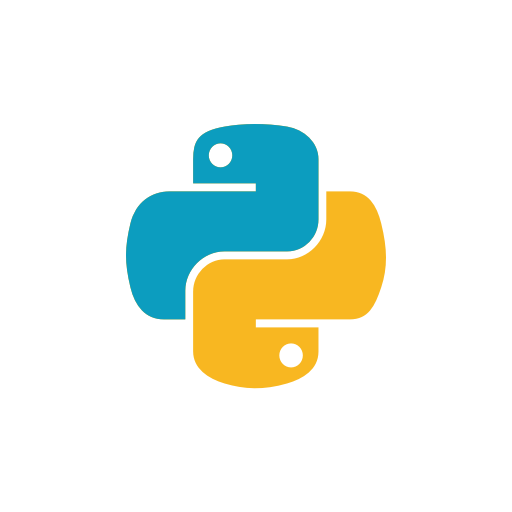IoT Cloud Platform
from scratch
IoT Cloud Platform






- Bootstrap a server
- Fast iterations
- Be as much efficient as possible
- Do not reinvent the wheel
- Find a market fit before going in full production
- Be flexible
- Be ready to change everything
- Prototyping
- Fast deployments
- Focus on the product not the technology
Startup Goals
"Be wrong as fast as you can"
Pixar philosophy






Bootstrap a Server
Python

- High productivity
- Flexibility
- Fast prototyping
- Huge support
- Huge ecosystem
- Good portability
- Arguably poor performance
- Arguably messy
- Arguably problems with async and multi thread (GIL...)
Bootstrap a Server
Flask
- Microframework
- Super simple
- Pythonic
- Explicit (easy refactoring)
- Extendible
- Good support
- Good community
- Arguably fast
- Arguably safe
from flask import Flask
app = Flask(__name__)
@app.route("/")
def hello():
return "Hello World!"from flask import Flask, request, jsonify
...
@app.route('/api/resource/<uuid>', methods=['POST'])
def create_resource(uuid):
content = request.get_json()
...
return jsonify({'uuid': uuid})Alternatives I like

Pyramid

Database


MongoDB or Postgres
Database


MongoDB or Postgres
- Document based
- Distributed
- Data model flexibility
- Document atomic
- Horizontal scaling
- Big Data with high concurrency, where data integrity is not important
- Table based
- Monolithic
- SQL language
- Database atomic
- Vertical scaling
- Tons of features...
Database
MongoDB or Postgres
Pick one, I don't care too much.
The focus should be on the product now.

+
Alembic
- ORM
- Postgres support
- Migrations
- Auto detect schema changes
- Upgrade + Downgrade

from pymongo import MongoClient
client = MongoClient()
db = client.test
result = db.very_important.insert_one({
'the answer to the meaning of life, the universe, and everything': 42,
})(and you can still have migrations with external tools)
-
Don't reinvent the wheel
-
Be efficient
-
PAAS
Platform as a Service
- Easy deploy
- Infrastructure problems solved
- Resource allocation
- Scaling
...
- Deploy with git
- Plugin system
- Auto-scaling
(pay what you use) - Easy to use
- App pipelines
(dev -> staging -> production) - Teams support
- HTTP based
- Free tiers
git -> build -> slug -> dyno
- it builds a slug (snapshot) from the source
- it runs a VM from the slug
- it runs one or more processes (dyno) in the VM
web: gunicorn hello:app
worker: celery worker --app=tasks.appProcfile






Messaging: MQTT
Publish-Subscribe Protocol
Broker
C1
C1
Backend
Publish
Publish
Subscribe
Publish
import paho.mqtt.client as mqtt
# The callback for when the client receives a CONNACK response from the server.
def on_connect(client, userdata, flags, rc):
print("Connected with result code "+str(rc))
# Subscribing in on_connect() means that if we lose the connection and
# reconnect then subscriptions will be renewed.
client.subscribe("$SYS/#")
# The callback for when a PUBLISH message is received from the server.
def on_message(client, userdata, msg):
print(msg.topic+" "+str(msg.payload))
client = mqtt.Client()
client.on_connect = on_connect
client.on_message = on_message
client.connect("mqtt.something.com", 1883, 60)
# Blocking
# client.loop_forever()
# Threaded
client.loop_start()MQTT Broker
- Safe message delivery
- Arguably fast (thousands of devices)
- Resource-constrained devices
- Less features (ex. no queues)
- Simpler than AMQP
- Smaller memory footprint
- CloudMQTT plugin for Heroku
- Mosquitto (Open Source)

VM on demand
- Auto-setup
- Auto-delete
- Full control
- Complete API
- Static IP
- Snapshots
- Create from snapshots
python-digitalocean
import digitalocean
manager = digitalocean.Manager(token="my secret")
my_droplets = manager.get_all_droplets()
for droplet in my_droplets:
droplet.shutdown()import digitalocean
droplet = digitalocean.Droplet(token="my secret",
name='Example',
region='nyc2',
image='ubuntu-14-04-x64',
size_slug='512mb',
backups=True)
droplet.create()






Linux is everywhere
GO
- Fast
- Easy to learn
- Designed for concurrency
- Deploy everywhere
- Static independent binaries
- Wonderful standard library
- Awesome community
- Awesome tools
- Ideal for embedded
development
import (
mqtt "github.com/eclipse/paho.mqtt.golang"
)
func main() {
...
opts := mqtt.NewClientOptions().AddBroker("tcp://somewhere:1883")
client := mqtt.NewClient(opts)
client.connect()
client.Subscribe("my/topic", 0, func(client mqtt.Client, msg mqtt.Message) {
// Do something with payload
msg.payload()
})
...
client.Publish("my/topic", 0, false, "mymessage")
...
}paho.mqtt.golang
Json Payloads
package main
import "encoding/json"
import "fmt"
type Payload struct {
Field1 int `json:"field1"`
Field2 []string `json:"field2"`
}
func main() {
p := &Payload{
Field1: 10,
Field2: []string{"one", "two", "three"},
}
output, _ := json.MarshalIndent(p, "", " ")
fmt.Println(string(output))
payload := Payload{}
json.Unmarshal(output, &payload)
fmt.Println(payload)
}
{
"field1": 10,
"field2": [
"one",
"two",
"three"
]
}
{10 [one two three]}Thank you!
IoT Cloud Platform from Scratch
By Gendo Ikari
IoT Cloud Platform from Scratch
- 93



